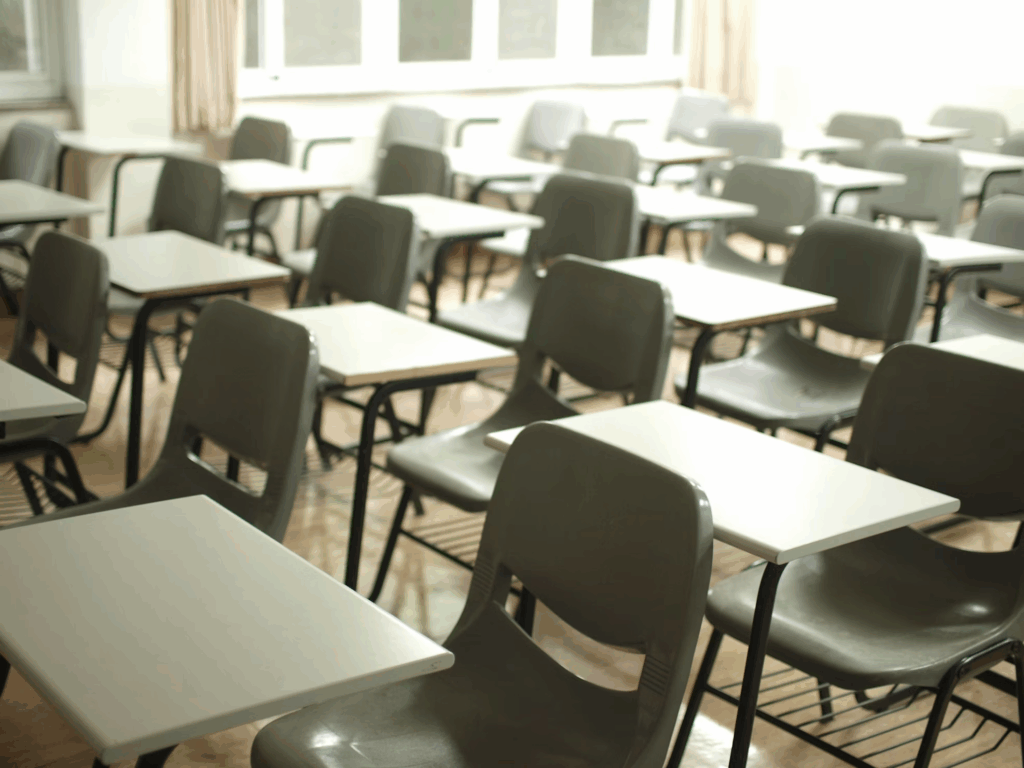How do you enhance classroom learning results for students?
Ergonomic school desks play a crucial role in establishing learning environments where student success can flourish. These innovative desks are designed to:
- Increase physical comfort
- Boost student focus
- Reduce health issues
- Support modern learning styles
Here’s what’s interesting:
Educational experiences for students are transformed through the rising emphasis on ergonomic classroom furniture that establishes learning spaces centered on student comfort and academic achievement.
Now let’s examine the critical importance of these desks…
What you’ll discover:
- Why Ergonomic School Desks Matter
- Key Features of Modern Student Desks
- The Benefits of Ergonomic Classroom Furniture
Why Ergonomic School Desks Matter
Ergonomic school desks represent essential purchases that boost student well-being alongside their educational performance.
Traditional desks followed a “one-size-fits-all” design yet current research shows this method results in discomfort along with poor posture and limited concentration abilities. Today’s student desks are specifically engineered to support proper posture and accommodate the varied needs of growing students.

The numbers don’t lie. The nationwide need for height-adjustable desks and posture-supporting chairs has grown by 35% as studies demonstrate these products directly contribute to better student comfort and focus.
Why? Physical comfort in students leads to higher levels of learning engagement. Children who maintain stable seating positions without discomfort can better concentrate their energy on learning activities.
Think about it:
Throughout their K-12 education years students accumulate around 13,000 hours seated at school desks. Students spend in excess of 1,000 hours annually sitting in identical positions. The critical role of proper ergonomics during students’ formative years demands emphasis.
The right ergonomic desk helps prevent:
- Back and neck pain
- Poor circulation
- Decreased attention span
- Restlessness and fidgeting
And these benefits aren’t just anecdotal. The U.S. school furniture market achieved $2.06B in 2024 and is forecast to expand at a 6.2% CAGR through 2030 because of increased demand for ergonomic seating and technology-integrated designs.
Institutions that purchase ergonomic student desks from trustworthy suppliers commit to long-term improvement of student health and academic success. The proper desk choice can enhance classroom learning by creating an optimal environment that minimizes physical distractions that interfere with education.
Young students need proper seating to support their growth throughout developmental years. Traditional desks in schools force students to sit awkwardly which leads to lasting poor posture habits. Modern ergonomic student desks provide appropriate support to address growth concerns during critical development years.
Key Features of Modern Student Desks
What makes a school desk truly “ergonomic”? Ergonomic desks prioritize thoughtful design that creates a healthy and comfortable learning space which helps students maintain focus.
The key elements that differentiate modern ergonomic desks from others are as follows:
- Height adjustability: Furniture for students needs to cater to their varying shapes and sizes to ensure proper support. Students can benefit from desks with height adjustment capabilities because they fit individual heights to maintain correct arm position while minimizing strain.
- Proper depth design: The desk surface needs sufficient depth to hold books and devices while also allowing users to maintain the suggested screen viewing distance between 20 and 40 inches.
- Angled work surfaces: Modern desk designs feature gentle slopes which support proper posture during reading and writing activities while substantially decreasing neck and shoulder tension caused by bending forward.
- Rounded, smooth edges: Safety matters! Ergonomic desks have rounded corners which prevent injuries and ensure comfort for arms when resting during extended study periods.
- Mobility options: Modern desk designs use wheels and lightweight frames to allow fast and easy reorganization for various educational tasks including solo work and group projects.
- Integrated storage: Smart storage systems enable students to maintain organization while accessing materials without having to twist or bend awkwardly as everything remains within immediate reach.
- Sustainable materials: Modern ergonomic desks combine eco-friendly materials with long-lasting durability to handle intense daily use in classrooms for many years.
- Posture support: Certain desks integrate specific seating solutions which keep students in proper posture throughout their school day enabling better concentration while safeguarding their developing spinal structures.
The latest research shows that Northeast schools spend more money than any other region on ergonomic furniture for classrooms and allocate more than $500 per student for collaborative and tech-enabled desks in 45% of these schools. Midwest schools show a preference for durable options as 55% of them select budget-friendly solutions that cost less than $400 per student.
The market for ergonomic school desks remains dynamic as educational requirements drive its progression. Modern designs show our advanced knowledge of physical comfort’s effect on educational performance by moving beyond basic flat surfaces with attached chairs. The ability to focus on academic work instead of physical discomfort leads to better attention spans and information retention among students.
The Benefits of Ergonomic Classroom Furniture
Investing in ergonomic school desks provides multiple benefits that surpass basic comfort levels. Ergonomic furniture forms the basis for better learning results at all school levels.
Improved Focus and Engagement
Students maintain complete concentration on their studies when they don’t need to adjust their position frequently. The design of ergonomic desks minimizes physical distractions which enables students to maintain sustained focus which teachers highly appreciate.
Studies demonstrate that students who utilize adjustable-height desks show greater engagement during classroom activities and exhibit better on-task behaviors in contrast to students seated at traditional desks.
Health Benefits for Growing Bodies
The physical development of students makes appropriate support crucial when they sit for lengthy durations.

Quality ergonomic desks help:
- Promote proper spinal alignment
- Reduce strain on developing muscles
- Prevent poor posture habits
- Support healthy circulation
Flexibility for Different Learning Styles
The modern education system utilizes a variety of teaching methods which are complemented by ergonomic furniture that enables teaching flexibility. Recent regional statistics show that Southern schools are adopting flexible desk solutions as 40% of them now use mobile workstations that enable easy reconfiguration.
These adaptable environments allow for:
- Individual focused work
- Small group collaboration
- Technology integration
- Movement-based learning activities
Support for Technology Integration
The current educational environment extends beyond traditional writing tools. Ergonomic desks combine technology-friendly designs with cable management systems and device-accessible heights while supporting both digital and traditional tool surfaces.
The U.S. Department of Education’s $195.44B FY23 budget funds infrastructure improvements that include ergonomic furniture enabling schools nationwide to develop spaces conducive to both technology use and ergonomic design.
Putting It All Together
Ergonomic school desks function as more than modern furniture since they support student health, engagement levels and educational success. The U.S. school furniture market is expected to expand at 6.2% CAGR until 2030 which shows educational institutions understand the importance of physically supportive learning environments.
Educational settings that focus on ergonomic design will enable schools to:
- Enhance student comfort and attention
- Support diverse learning activities
- Accommodate technology integration
- Promote healthy physical development
Investing in high-quality student desks extends its impact from the classroom environment by supporting immediate learning goals alongside students’ long-term health needs. Student success across the nation’s 129,000 public/private K-12 schools depends on a strong physical environment which starts with well-designed desks as education continues to develop.

